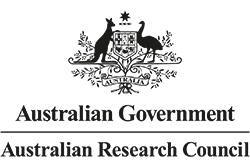Tech-Sex: Law, Sex and Technologies
Over the past two decades, there has been a rapid expansion of technologies that enhance or facilitate sexual experience or intimacy. This includes digital technologies, such as smart phones and dating apps, mechanical technologies, such as digitally connected vibrators, and medical technologies, such as surgical processes and pharmaceutical products.

About the project
The Tech-Sex project aims to enhance knowledge and explore important implications of new digital, mechanical and medical technologies that are transforming our sexual lives. It will explore the diverse ways in which people have incorporated new technologies into their sexual and intimate lives and reveal how this is changing or expanding people’s sexual opportunities and experience. We also aim to understand potential risks that may be associated with new sex technologies such as privacy breaches or sexual harassment and look at strategies to build cyber-sexual literacy.
This project is divided into a number of smaller projects covering varying aspects concerning sex and technology, and various research methodologies. They include the following:
- Sex and intimacy during COVID-19
- Understanding techno-sexual cultures
- Men, sex & consent
- Law, sex and technologies
- Smart Sex: Designers and Users
Tech-Sex project team
This project is led by a team of international researchers who specialise in sex and sexuality, technology studies, women and gender studies, law and legal studies, and sexual health research, as well as a team of research officers and PhD students to support the managing of the project.
It is based at the Australian Research Centre for Sex Health and Society (ARCSHS), La Trobe University, Australia. ARCSHS is a centre for social research into sexuality, health and the social dimensions of human relationships. It works collaboratively and in partnership with communities, community-based organisations, government and professionals in relevant fields to produce research that advances knowledge and promotes positive change in policy, practice and people’s lives.
Tech-Sex project: law, sex and technologies strand
The sexualised use of technologies has highlighted potential legal complexities and safety concerns. Existing legal frameworks may be inadequate to respond to issues of consent, confidentiality, privacy, surveillance, harassment, ownership and control that have emerged as a result of these new sexual technologies. The law strand of the Tech-Sex project focuses on analysing the law and regulation of sex technologies in the UK and Australia.
We aim to identify and map existing policies, laws or other regulatory frameworks which may be of relevance to sex technologies, with a view to understanding potential gaps or barriers in the law. In doing this, we also aim to identify where reform may be needed to allow legal systems to better accommodate and respond to sex technologies.
Law, sex and technologies: project team
Lead Investigator
Professor Anne-Maree Farrell
Chair of Medical Jurisprudence, Edinburgh Law School
View profile
Research Associates
Dr Elizabeth Agnew (Edinburgh Law School)
E: Elizabeth.Agnew@ed.ac.uk
Samantha Hopkins (Edinburgh Law School)
E: Shopkin2@exseed.ed.ac.uk
Ms Nicole Shackleton (La Trobe University)
E: N.Shackleton@latrobe.edu.au
Funding
The project is supported by the Australian Government through the Australia Research Council Discovery projects funding scheme (DP19010207).
The sexualised use of deepfakes – AI technology that creates hyper-realistic images and videos of individuals saying and doing things that they do not say or do – has potential moral, social and legal consequences for adults residing in Australia and the UK. In recent years, the use of deepfake technology has grown across a number of public and political domains. In particular, it has been used for the creation of pornography, often without the consent or knowledge of the individuals depicted in the images or videos.
As things stand, law’s ability to restrict or prohibit online distribution of such non-consensual images may be low, given that it occurs rapidly, often across jurisdictional boundaries, and via diverse social media. A key research question to consider in this study is the extent to which law should intervene to restrict prohibit, or conversely protect, the dissemination of deepfake pornography.
However, there may be other circumstances where the creation of deepfake pornography is consensual, offering the potential to create new sexual experiences for certain groups, such as people with disabilities. In such circumstances, we may need to consider to what extent the dissemination of such images and/or such groups should be offered some degree of protection under the law.
This research strand investigates potential legal concerns and risks associated with deepfake pornography in Australia and the UK. As part of this research, we are analysing current legal and regulatory frameworks concerning the creation and dissemination of such images, as well as considering options for policy and law reform
We will be analysing how people perceive legal risks while using sex technologies to establish or maintain sexual connections, relationships and experiences during the coronavirus pandemic. This research will be informed by a national survey of adults residing in Australia led by the Tech-Sex project team based at the Australian Research Centre for Sex Health and Society (ARCSHS).
The sex technology industry is a multi-billion-dollar industry. As use of AI becomes more common and more advanced – there are concerns that manipulating technology too much will inevitably present a number of legal and ethical risks. This case study will explore one of those potential risks – sexbots. Sexbots, otherwise termed ‘robotic sex dolls,’ have mostly been designed for the male market and include the creation of ‘Harmony’ and ‘Samantha,’ amongst others. These AI sex dolls can be customised to suit the customers ‘ideal’ partner including eye colour, hair colour, skin colour as well as possessing a specific personality.
Similar to the sexualised use of deepfakes – sexbots have raised significant ethical, social and legal questions. Despite concerns, limitations of the law to regulate the adult sexbot industry have been noted e.g. what ‘harm’ or ‘wrong-doing’ is actually being caused/committed? Scholars have argued that the existence of adult sexbots promote sexual objectification of women and can encourage unhealthy and abusive sexual relations e.g. sexbots can be designed to allow an individual to act out rape fantasies.
There may, however, be circumstances when the use of sexbots is viewed as ‘beneficial’ or less ‘harmful’ e.g., for medicinal purposes (such as treatment of sexual dysfunctions) or for elderly companionship. In such cases, is there room for the law to protect the manufacturing and selling of adult sexbots within certain contexts? This case study will test existing theories against an ethical and legal framework.
In sum, case study 3 presents a similar regulatory research question as that for the use of sexualised deepfakes: when should the law intervene to restrict, or conversely protect, the design, manufacturing and use of adult sexbots.

